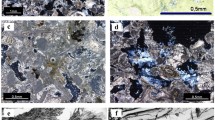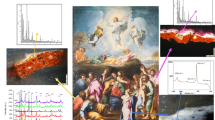Abstract.
Analytical chemistry does play a key role in the chemical characterization of the environment and it appears that X-ray spectrometry, in its many forms, is one of the most relevant analytical techniques in preventive conservation, as it is in cultural heritage research in general. X-ray spectrometry has indeed been the method of choice for the characterization of the inorganic composition of atmospheric aerosols, for a long time.
We have, over the last decade, intensively used various forms of X-ray spectrometry, viz., mostly energy-dispersive X-ray fluorescence, e.g. with polarized high-energy beam excitation, and automated electron probe X-ray microanalysis, together with other techniques, to identify particle types and their sources in indoor environments, including museums, while gaseous indoor pollutants were assessed using passive diffusion samplers. In each case, both bulk aerosols and individual aerosol particles were studied. For microanalysis of single particles, we have investigated a dozen techniques, but for wide, real-life applications, automated electron probe X-ray microanalysis is the most rewarding.
We have first studied atmospheric aerosols in and around the Correr Museum in Venice, many other museums in Austria, Japan and England, and in the caves with prehistoric rock paintings in Altamira, Spain. Very recently, measurements were done in the Metropolitan Museum of Art in New York and the Wawel Castle in Cracow, in Italian and Polish mountain churches, in a number of museums in Belgium and the Netherlands, and in cathedrals with medieval stained glass windows. In the Correr museum, it appeared that the particles most threatening for the Bellini paintings were released by the deteriorating plaster renderings, and this could be avoided by simply improving the rendering on the museum walls. In the Wawel Castle, outdoor pollution particles, like fine soot from diesel traffic, entering via leaks in the windows and doors, and also street-deicing salts and coal burning pollution particles, brought in by visitors, mostly in winter, were found to be most worrisome.
Urgent questions that are not solved at this moment pertain to the deposition processes from the atmosphere to the cultural heritage items, the critical surface interactions that take place on these items, and the establishment of suitable particle concentration standards.
Similar content being viewed by others
References
Z Spolnik, K Belikov, K Van Meel, E Adriaenssens, F De Roeck and R Van Grieken, Appl. Spectrosc. 59, 1465 (2005)
C-U Ro, J Osan, I Szaloki, J de Hoog, A Worobiec and R Van Grieken, Anal. Chem. 75, 851 (2003)
I Bondarenko, B Treiger, R Van Grieken and P Van Espen, Spectrochim. Acta B51, 441 (1996)
L A De Bock, R E Van Grieken, D Camuffo and G W Grime, Environ. Sci. Technol. 30, 3341 (1996)
D Camuffo, P Brimblecombe, R Van Grieken, H-J Busse, G Sturaro, A Valentino, A Bernardi, N Blades, D Shooter, L De Bock, K Gysels, M Wieser and O Kim, Sci. Total Environ. 236, 135 (1999)
A Worobiec, E A Stefaniak, V Kontozova, L Samek, P Karaszkiewicz, K Van Meel and R Van Grieken, e-Preservation Science 3, 63 (2006)
A Worobiec, L Samek, P Karaszkiewicz, V Kontozova-Deutsch, E A Stefaniak, K Van Meel, A Krata, L Bencs and R Van Grieken, Microchem. J. 90, 99 (2008)
A Worobiec, L Samek, A Krata, K Van Meel, B Krupinska, E A Stefaniak, P Karaszkiewicz and R Van Grieken, J. Cultural Heritage 11, 354 (2010)
Author information
Authors and Affiliations
Corresponding author
Rights and permissions
About this article
Cite this article
VAN GRIEKEN, R., WOROBIEC, A. X-ray spectrometry for preventive conservation of cultural heritage. Pramana - J Phys 76, 191–200 (2011). https://doi.org/10.1007/s12043-011-0041-3
Published:
Issue Date:
DOI: https://doi.org/10.1007/s12043-011-0041-3




